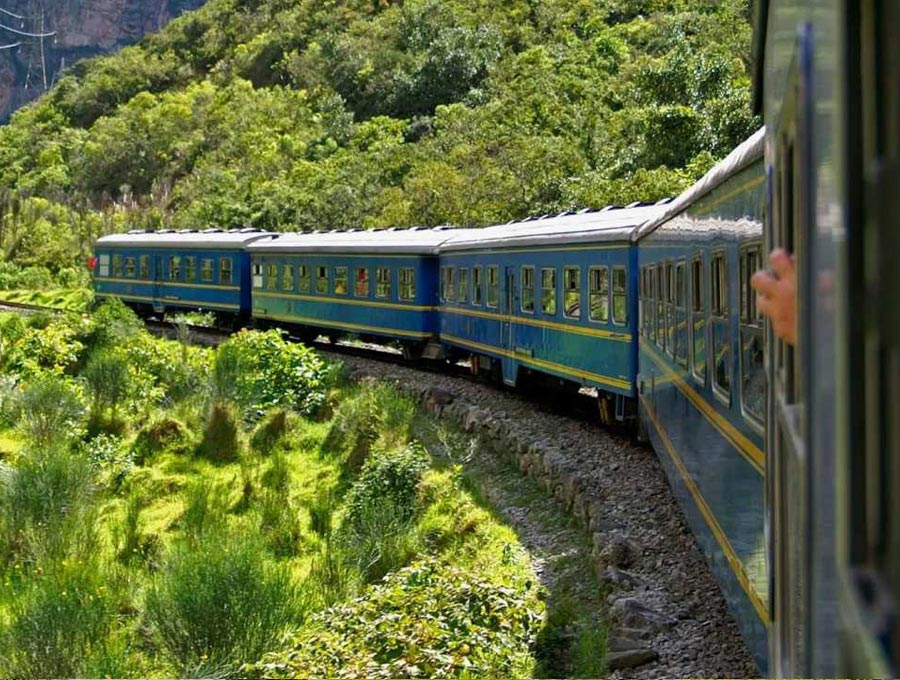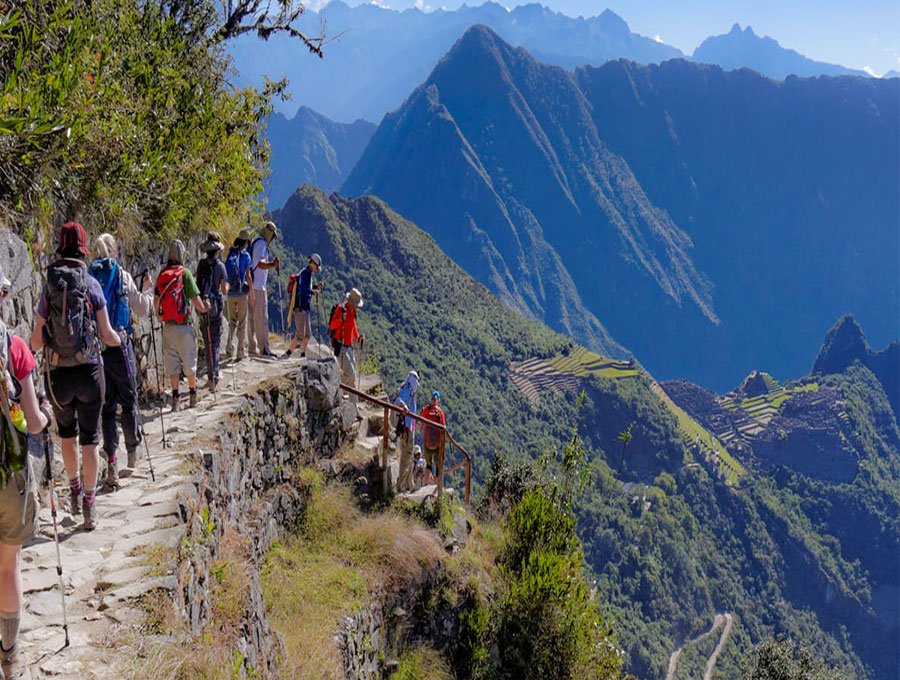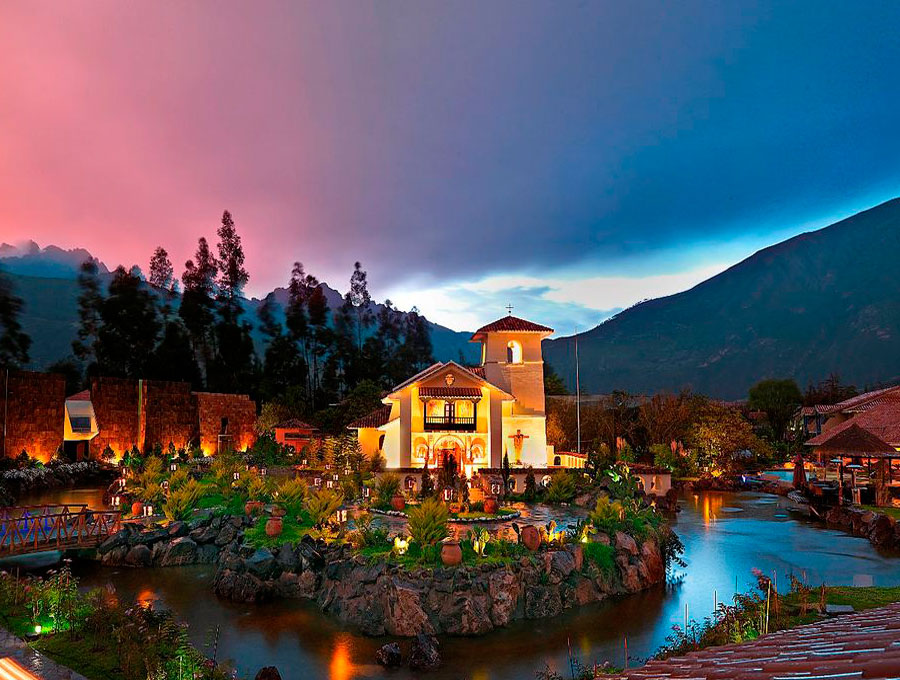Machu Picchu, the ancient Incan ruins nestled in the mountains of Peru, is a popular bucket list destination for travelers. If you plan to visit Machu Picchu, you’ll likely start in Cusco, a city located about 75 kilometers away. Getting to the ruins can be a bit tricky due to the difficult terrain, but there are different transportation options available. From taking the train, hiking, or taking a bus, this guide covers all you need to know to plan your trip.
How to Get to Machu Picchu
If you’re planning a trip to Machu Picchu, the first step is to figure out how to get there. Luckily, there are several transportation options available to choose from. Whether you prefer a leisurely train ride or an adventurous trek, you’ll find ways to get to the famous ruins.
By Train
The train is perhaps the easiest and most popular way to reach Machu Picchu. There are two companies, Peru Rail and Inca Rail, providing different services and prices departing from various train stations in Cusco and the Sacred Valley. Train travel offers spectacular views of the Andean mountains and the Urubamba River.
Train Tickets
It’s essential to purchase train tickets in advance, especially during the high season, which runs from May to September.

Train Companies
Peru Rail and Inca Rail are the two companies providing train services to Machu Picchu. Peru Rail offers three types of trains: Expedition, Vistadome, and Belmond Hiram Bingham. Inca Rail offers two types of trains: The Voyager and The 360°. Each company has a different level of service, schedule, and price range, so it’s crucial to choose the best option for your needs and budget. Peru rail & Inca Rail
Prices and Schedules
The prices, including train and bus transfers, range from about $173 USD for the Expedition to $980 USD for the Belmond Hiram Bingham, one of the most luxurious trains in the world. by Peru Rail
Train schedules vary, and it’s advisable to check the company’s official website for the most updated timetable and travel duration.
By Bus and Train
If you prefer a cost-effective option, the bus and train combination may be suitable for you. This route involves taking a land transport from Cusco to Santa Teresa and a local train from the Hydroelectric train station to Aguas Calientes. by Peru Rail
Taking the Bus from Cusco to Santa Teresa
The bus journey from Cusco to Santa Teresa is an adventure in itself. You’ll pass through the Sacred Valley and see some of the most spectacular sights in the Andes. The journey takes about six hours and costs around $20 USD.
Local Train from Hydroelectric Train Station to Aguas Calientes
The Hydroelectric train station is the starting point for the final leg of the journey to Machu Picchu. From there, you can take a scenic train ride to Aguas Calientes, the town located at the base of the ruins. Peru Rail
- Duration: 45 minutes
- Cost: $31 – $43 USD (depending on the type of train)
In comparison to the train-only option, this alternative offers a more adventurous and budget-friendly journey through the beautiful Andean landscape to reach Machu Picchu.
Hiking to Machu Picchu
Hiking to Machu Picchu is an unforgetta forble experience adventure enthusiasts. The breathtaking scenery, challenging terrain, and cultural significance make for an unparalleled trekking adventure. There are several trekking options available, including the Inca Trail, Salkantay Trek, and Inca Jungle Trek, all with unique features and varying degrees of difficulty.

Inca Trail
The Inca Trail is the most famous and popular hiking route to Machu Picchu. It is a four-day trek that covers 42 kilometers. The trail features stunning Andean landscapes and passes through Inca ruins, such as Wiñay Wayna and Intipata. Walking along this trail is a fascinating insight into Inca culture and history.
Permits and Restrictions
Due to the trail’s popularity, permits are required to hike the Inca Trail, and daily visitor limits are enforced. Permits are released four months in advance, and it is recommended to book early, particularly for popular dates such as May to September. Only licensed tour operators can book permits for visitors.
Itinerary and Difficulty
The Inca Trail’s standard itinerary is a four-day hike, covering roughly 8-11 kilometers each day. The trail reaches an altitude of 4,215 meters above sea level at its highest point, so adequate acclimatization is vital. The trail’s difficulty level is moderate to challenging, so prior hiking experience is beneficial.
Salkantay Trek
The Salkantay Trek is an alternative to the Inca Trail, known for its spectacular views of the Salkantay Glacier and the Andes mountains. It’s a five-day trek that covers approximately 60 kilometers and reaches an altitude of 4,650 meters above sea level.
Overview and Itinerary
The trek starts in Mollepata and finishes in Machu Picchu Pueblo, following the spectacular Salkantay pass. The itinerary includes camping in stunning natural surroundings, including hot springs and cloud forests.
Difficulty and Best Time to Go
The Salkantay Trek is considered challenging, with steep ascents and descents. Visitors should ensure sufficient physical preparation beforehand. The best time to go is during the dry season, between April and October, and avoiding the rainy season between November and March. Inca Trail
Inca Jungle Trek
The Inca Jungle Trek is a four-day trek that combines hiking with various other activities like biking, zip-lining, and rafting. It is the perfect trek for adventure enthusiasts and adrenaline junkies. The trail covers 60 kilometers and reaches an altitude of 4,200 meters above sea level.
Overview and Itinerary
The trek starts in Cusco and involves several activities like mountain biking, zip-lining, and hiking through the jungle. The trail reaches its peak at the Abra Malaga pass and then descends to Machu Picchu Pueblo, where visitors can relax and explore the town before visiting Machu Picchu.
Difficulty and Best Time to Go
The Inca Jungle Trek is considered moderately challenging, with several activities to keep visitors engaged. Physical preparation beforehand is recommended. The best time to visit is during the dry season, between April and October, avoiding the rainy season between November and March.
Accommodation and Acclimatization
In order to fully enjoy your trip to Machu Picchu, it is important to consider where to stay and how to acclimatize to the higher altitude.

Where to Stay
There are two main options for staying overnight before or after visiting Machu Picchu: Aguas Calientes and the Sacred Valley.
- Aguas Calientes: This small town is located at the base of Machu Picchu and is the closest option for overnight accommodation. It offers a range of price points for lodging, from budget-friendly hostels to luxury hotels.
- Sacred Valley: This scenic region is located between Cusco and Machu Picchu and offers a variety of lodging options in charming towns, such as Ollantaytambo and Pisac. The Sacred Valley is a great option for those who want to experience the Andean culture and relax in nature.
Altitude Sickness
The higher altitude in the region can cause altitude sickness, also known as acute mountain sickness. Symptoms can range from mild to severe and can include headaches, nausea, dizziness, and shortness of breath. To prevent altitude sickness, it is recommended to acclimate gradually to the higher altitude by spending a few days in Cusco or the Sacred Valley before heading to Machu Picchu. Drinking plenty of water and coca tea can also help.
Symptoms and Prevention
- Symptoms: Symptoms of altitude sickness can include headache, nausea, dizziness, fatigue, and shortness of breath. Severe cases can include pulmonary edema and cerebral edema. It is important to pay attention to your body and seek medical attention if necessary.
- Prevention: To prevent altitude sickness, it is important to acclimate gradually, staying hydrated, and avoiding alcohol. Prescription medication can also be helpful for some individuals.
Acclimatization Tips
- Gradual Acclimatization: Spend a few days in Cusco or the Sacred Valley before traveling to Machu Picchu to give your body time to adjust to the higher altitude.
- Hydration: Drink plenty of water and coca tea to prevent dehydration and aid in acclimatization.
- Avoid Alcohol and Physical Exertion: Avoid drinking alcohol and strenuous physical activity that can exacerbate altitude sickness symptoms.
Planning and Booking
If you’re planning a trip to Machu Picchu, it’s important to consider all aspects of the journey to make it a seamless experience. This section provides guidance on booking tickets to Machu Picchu, the best time to visit, and other things to consider before embarking on the trip.
Tickets to Machu Picchu
To visit Machu Picchu, visitors need to purchase entrance tickets in advance. Tickets are not sold at the entrance of the ruins, so it’s essential to plan ahead to secure your spot. You can purchase tickets online on the official Machu Picchu website or through our travel agency: GayPeru Travel, included in the tour packages. It’s important to note that the daily visitor limit is restricted, so it’s recommended to buy tickets in advance, especially during the high season from May to September.
Daily Visitor Limits
To preserve the site, a daily visitor limit of 5,000 people is enforced. It’s recommended to book your tickets early, especially for popular times, as tickets often sell out months in advance.
Best Time to Visit Machu Picchu

The best time to visit Machu Picchu is during the dry season from May to October, when the weather is mild and there is less chance of rain. However, this is also the high season, and the site can get crowded, so you may want to avoid peak times. The shoulder season from April to May and November to December can be a good alternative, as the weather is still good but the crowds are less. The rainy season from January to March is the low season but be prepared for wet weather and slippery trails.
Weather Conditions
The weather at Machu Picchu can be unpredictable, and it’s important to be prepared. During the rainy season, the trails can be muddy and slippery, so appropriate hiking shoes are essential. The high season can also experience chilly mornings and evenings, so it’s important to bring warm layers. Check the forecast before heading out and pack accordingly.
High and Low Seasons
The high season from May to September is the busiest time in Machu Picchu, with large crowds and higher prices. If you prefer to avoid the crowds, the low season from January to March can be a good alternative, but be prepared for wet weather. The shoulder season from April to May and November to December can be a great balance of good weather and fewer crowds.
Other Things to Consider
A successful trip to Machu Picchu involves more than just booking tickets and arriving at the site. Here are some other things to consider before embarking on your journey: peru rail
Packing List
When packing for your trip, it’s important to bring appropriate clothing and gear, such as hiking shoes, rain jacket, sunscreen, and insect repellent. Bring a backpack to carry your belongings during the hikes, and make sure to pack enough water and snacks. If you plan on hiking, bring a headlamp or flashlight, as some hikes start early in the morning.
Travel Insurance and Safety Tips
Machu Picchu can be a challenging and strenuous experience, especially for those who plan to hike. It’s important to purchase travel insurance beforehand to cover any unforeseen circumstances. When hiking, make sure to stay on designated trails, bring a map and compass, and let someone know your itinerary. Altitude sickness is also a risk, so it’s important to acclimatize yourself before embarking on the journey. Drink plenty of water, avoid alcohol, and take it slow. Cusco, Machu Picchu
If you´re interested in visiting Cusco, Machu Picchu; you can check different tours in Peru here!


0 Comment